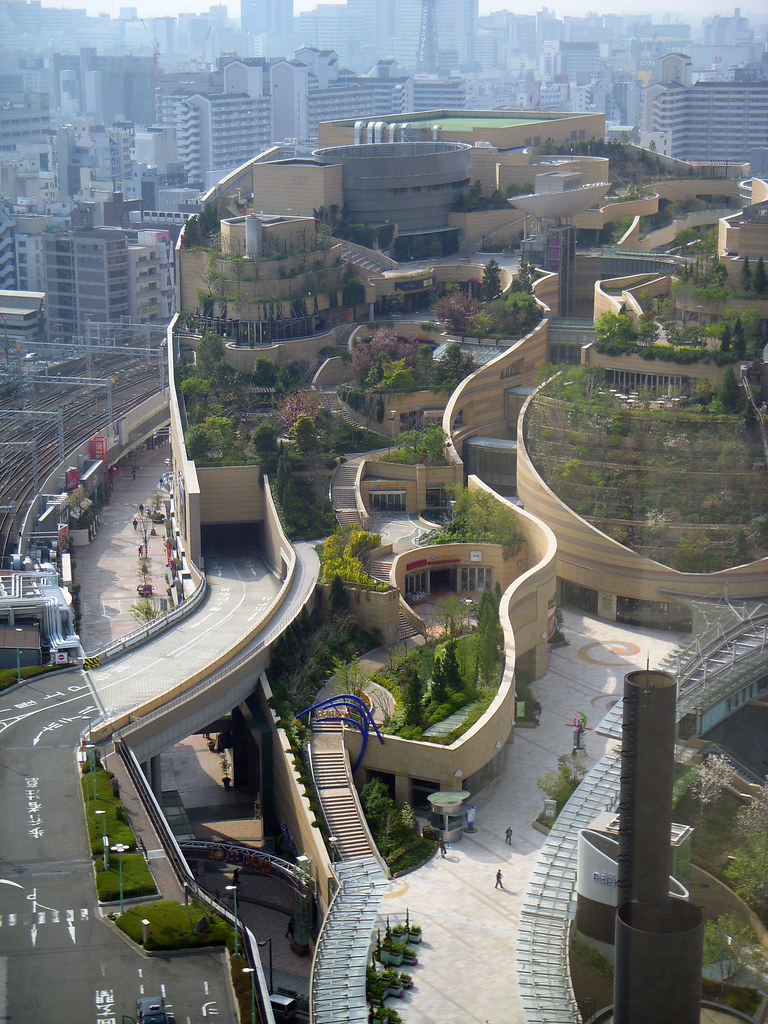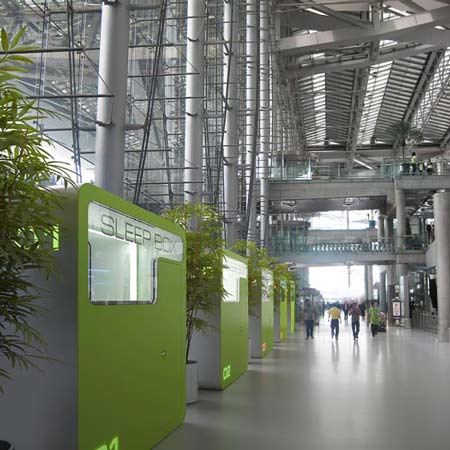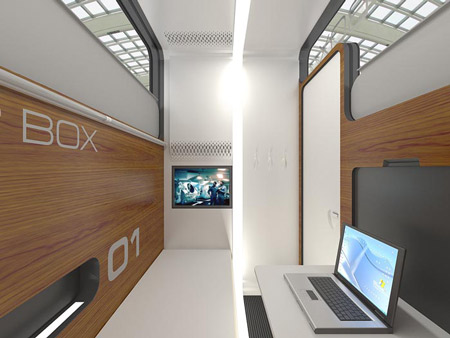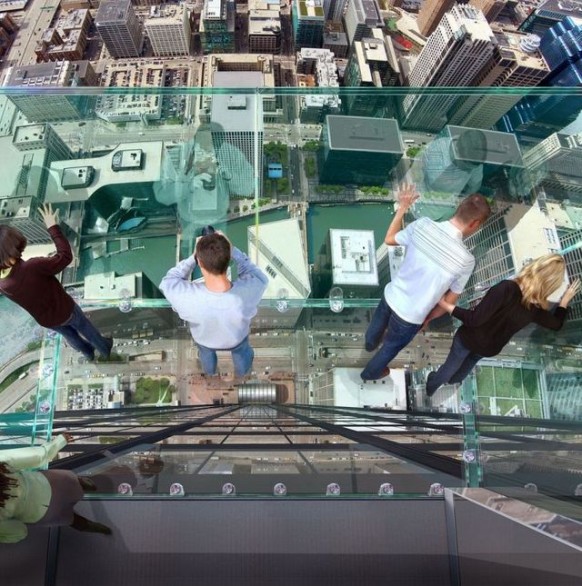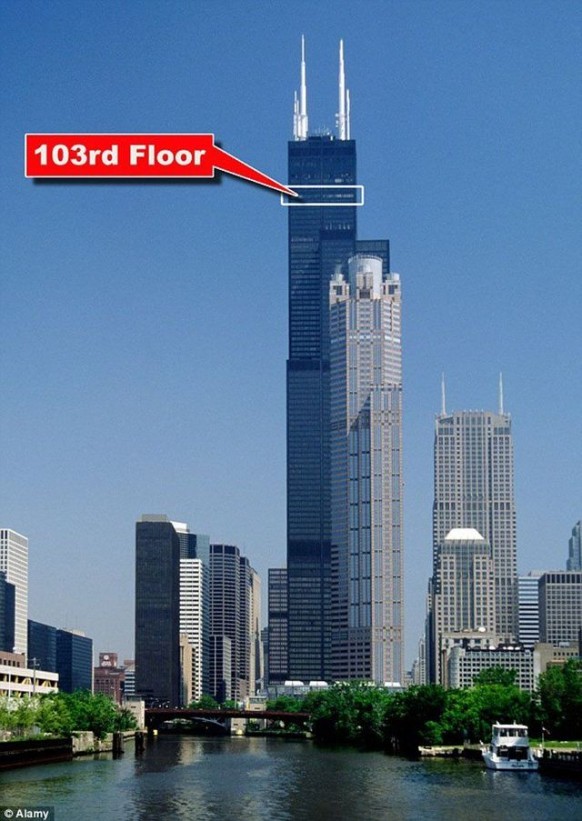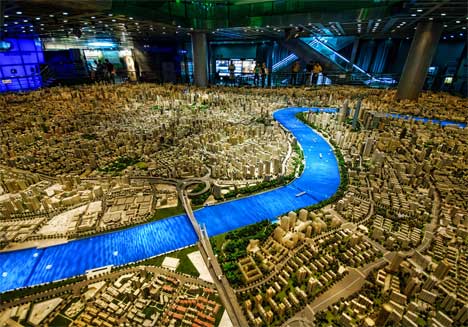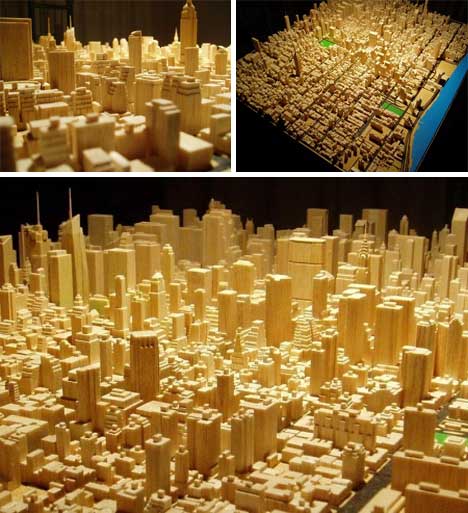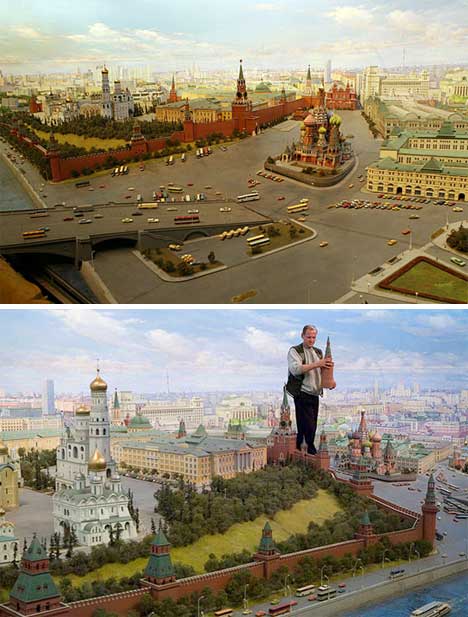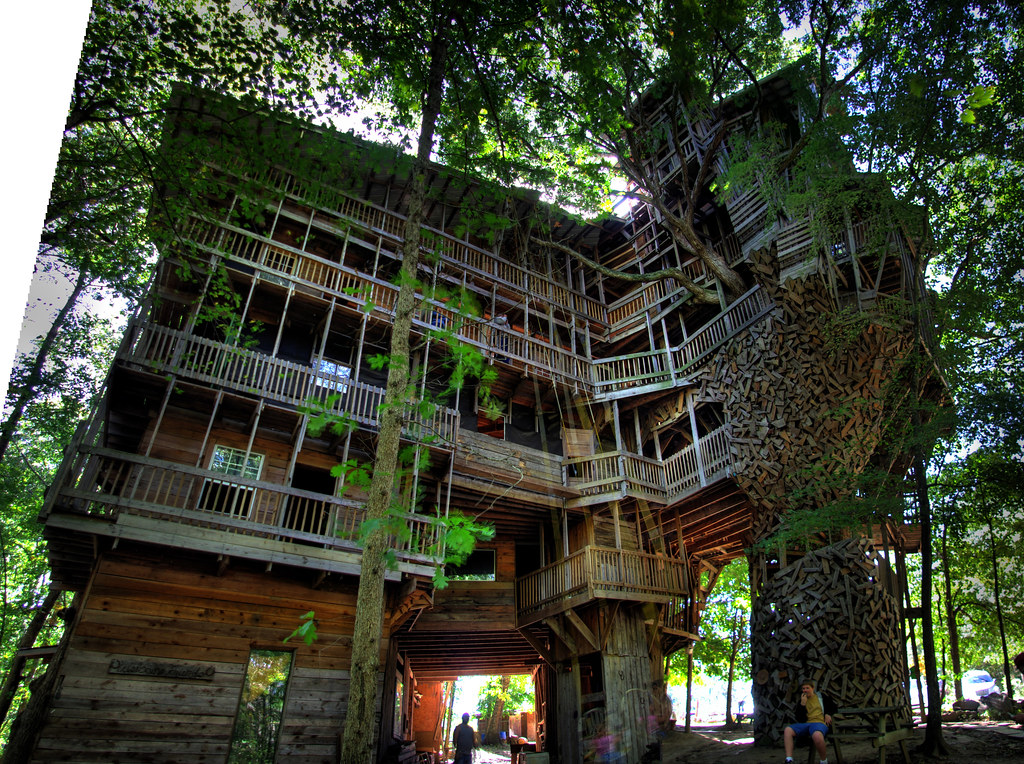Bringing you a (nearly) daily dose of awesomeness in the world of architecture, landscape architecture, and urban planning.
Tuesday, September 28, 2010
Arabs build awesome stuff? Wow, I had no idea!
Qatar, a small Arab country located on a peninsula bordering Saudi Arabia, has unveiled its bid to host the 2022 World Cup. This video shows concept designs for the first five of the stadiums which would be constructed for the event.
"Matter of Chronic Anger"
“Suppose that you had been commissioned to build a really grand opera house; that after the construction work had nearly been completed and your scheme of decoration fully designed you should be instructed that the building was to be used on Sundays as a Baptist Tabernacle, and that suitable place must be made for a huge organ, a pulpit, and a dipping pool. Then at intervals afterward, you should be advised that it must be so refitted and furnished that parts of it could be used for a court room, a jail, a concert hall, hotel, skating rink, for surgical cliniques, for a circus, dog show, drill room, ball room, railway station and shot tower? That is what is nearly always going on with public parks. Pardon me if I overwhelm you: it is a matter of chronic anger with me.”
Fredrick Law Olmsted
Olmsted Papers, Reel 22. January 22, 1891.
Fredrick Law Olmsted
Olmsted Papers, Reel 22. January 22, 1891.
Thursday, September 23, 2010
Osaka to me!
In a city with few green spaces, Namba Parks is a welcome swath of green for the inhabitants of Osaka. The complex stands where Osaka’s baseball stadium used to be until 2003, and consists of a 30-floor skyscraper, Parks Tower, and a shopping mall with eight floors of terraced gardens. The sloping park connects to the street, welcoming passers-by to enjoy its groves of trees, clusters of rocks, cliffs, lawn, streams, waterfalls, ponds and outdoor terraces.
Tuesday, September 21, 2010
Life Imitates Art. Well, maybe.
San Francisco's Bay Bridge is getting a makeover that will leave a large portion of the old bridge unused, but still standing strong. Now two architects are proposing that the city build a neighborhood on it.
Local architects Ronald Rael and Virginia San Fratello hit upon this idea after considering what was about to happen to the Bay Bridge. Here is an aerial view, showing the abandoned side of the bridge on the right. This span of the bridge is still very sturdy, and could easily bear quite a bit of weight. Why dismantle and waste it when you could turn it into a unique neighborhood?
In a detailed proposal for what they call The Bay Line, the architects suggest the bridge could be a series of public parks with neighborhoods hanging beneath the bridge. This is a more suburban version of what happens in William Gibson's novel Virtual Light, where squatters take up residence on the bridge after it is partly destroyed.
Rael and San Fratello also point out that other cities have successfully built bridge neighborhoods, including Florence, Italy's Ponte Vecchio (pictured below) and the London Bridge in London. Over at BLDG BLOG, Geoff Manaugh meditates on this possible bridge community, and writes:
While, on one level, this simply side-steps the immense financial implications associated with structurally maintaining these bridges . . . it does also kick-start a conversation about what we might be able to do with the massive pieces of civic infrastructure that dot the U.S. and are currently scheduled for replacement and demolition.
Source: FutureMetro.com
Full proposal available here in PDF.
Monday, September 20, 2010
New Orleans and Nashville could learn a lot from the Dutch.
Dutch architect Koen Olthius, of the firm Waterstudio, has envisioned a modern prefabricated housing complex to solve the problem of rising and falling tides, which the Dutch have been fighting for centuries. Instead of expensive means to contain tides and prevent water from flooding the low-lying areas, Koen is working on completely different approach – floating housing complexes.
Koen believes that containing water is difficult and instead of working on ways that promise to solve the purpose, the world should be ready with architecture that makes people live in harmony with water. Koen has designed the world’s first floating apartment complex, The Citadel, which will help people live on water and save energy at the same time.
The project makes use of water to regulate the interior temperatures of the complex, which helps in saving up to 25% energy than a conventional building on land. The design makes use of prefabricated modules for 60 luxury apartments, a car park and a floating road. The units will be built into a small area, making the housing complex achieve a density of 30 units per acre of water.
In addition to the use of energy saving systems, the complex will include greenhouses and each of the units will come with its own garden terrace as well as a view of the lake on which they’re built.
Friday, September 17, 2010
Leave it to the Europeans to come up with a new place to do it in an airport.
SLEEPBOX
Imagine that you are in a city where you are not a local resident, and you have not booked a hotel. If you're anything like me you rarely make plans when you travel and often find yourself looking for a place to sleep at midnight. A Russian architecture firm has developed what they believe is a solution to this dilemma. The call it the Sleepbox.
Thursday, September 16, 2010
What 'chu talkin' 'bout Willis Tower?
Willis Tower, formerly named Sears Tower, is a 108-story 1,450 feet (442 m) skyscraper in Chicago, Illinois. This tallest skyscraper in the United States has four glass box viewing platforms. These balconies are suspended 1,353 feet (412 m) in the air on the 103rd floor. As per reports, the inspiration for The Ledge came from hundreds of forehead prints visitors left behind on Skydeck windows every week.
Itty Bitty Cities: These guys are good.
You’re looking at one of the largest complete miniature cities in the world. At over 1,000 square feet, this massive scale model of Shanghai covers more ground than many apartments. It’s a projection of what the city will look like in the year 2020, with current buildings and planned buildings standing in this dazzling display. The model is currently in the Shanghai Urban Planning Museum.
The story behind this incredible model of Manhattan is almost as amazing as the model itself. It was built over the course of about 2,000 working hours by software engineer Michael Chesko. He wasn’t building the model in a professional capacity; he was simply having fun. He hand-carved each tiny piece from balsa wood using nothing more than an X-Acto knife, a nail file, and a Dremel. The impressive 1:3200 model now rests in New York’s Skyscraper Museum after being hand-delivered by Chesko and his wife; amazingly, neither had ever set foot in the city before that day.
The Bay Model is one of America’s most well-known models. It doesn’t depict an entire city; rather, it is a scale reproduction of the San Francisco Bay. It was built in 1957 by the U.S. Army Corps of Engineers to give a better understanding of the water flow patterns in the Bay. The model was used in countless scientific experiments until it was decommissioned as a research tool in 2000. It still remains a popular tourist attraction, and it was even used as a tool on the television show Mythbusters.
This Soviet-era model of Moscow is the largest miniature recreation of the city. Covering more than 400 square feet, the model opened in 1977 and is an incredibly detailed representation of the city at that time. Unfortunately, the museum it was in since the 1970s didn’t think it was worth the considerable electricity costs it generated, and in 2006 it offered the entire model for sale, for a modest price of just $3 million.
Source: WebUrbanist.com
The story behind this incredible model of Manhattan is almost as amazing as the model itself. It was built over the course of about 2,000 working hours by software engineer Michael Chesko. He wasn’t building the model in a professional capacity; he was simply having fun. He hand-carved each tiny piece from balsa wood using nothing more than an X-Acto knife, a nail file, and a Dremel. The impressive 1:3200 model now rests in New York’s Skyscraper Museum after being hand-delivered by Chesko and his wife; amazingly, neither had ever set foot in the city before that day.
The Bay Model is one of America’s most well-known models. It doesn’t depict an entire city; rather, it is a scale reproduction of the San Francisco Bay. It was built in 1957 by the U.S. Army Corps of Engineers to give a better understanding of the water flow patterns in the Bay. The model was used in countless scientific experiments until it was decommissioned as a research tool in 2000. It still remains a popular tourist attraction, and it was even used as a tool on the television show Mythbusters.
This Soviet-era model of Moscow is the largest miniature recreation of the city. Covering more than 400 square feet, the model opened in 1977 and is an incredibly detailed representation of the city at that time. Unfortunately, the museum it was in since the 1970s didn’t think it was worth the considerable electricity costs it generated, and in 2006 it offered the entire model for sale, for a modest price of just $3 million.
Source: WebUrbanist.com
Monday, September 13, 2010
Thursday, September 9, 2010
Whale Shaped Floating Garden Purifies Water
Reducing water pollution through bio-filtration, this whale-shaped floating garden is designed to drift through the rivers of the world while purifying water. Designed by Vincent Callebaut, Physalia is a self-sufficient ecosystem that generates all the power it needs from the sun. The roof of the Physalia is covered in solar cells, while hydro turbines under the hull create energy from the flowing river.
The craft’s exterior features a layer of TiO2, which reacts with ultraviolet rays to clean the water. Additional water is pumped through the garden systems, which biologically filters out contaminants and pollutants. Inside there are four distinct thematic gardens named “Earth”, “Wind”, “Fire”, and “Water”.
Physalia was inspired by the “Physalia physalis” jellyfish, whose name translates roughly to “Water Bubble”. The 260 foot long project was created in response to the major global issue that one billion people don’t have access to drinking water. Although we do not know when or if Physalia will be built, we applaud Callebaut for his grand imagination and valiant effort.
Source: My Modern Met
Monday, September 6, 2010
Steal This Idea
'Nothing is original. Steal from anywhere that resonates with inspiration or fuels your imagination...And don’t bother concealing your thievery—celebrate it if you feel like it. In any case, always remember what Jean-Luc Godard said: “It’s not where you take things from—it’s where you take them to."
- Jim Jarmusch
- Jim Jarmusch
Subscribe to:
Posts (Atom)
